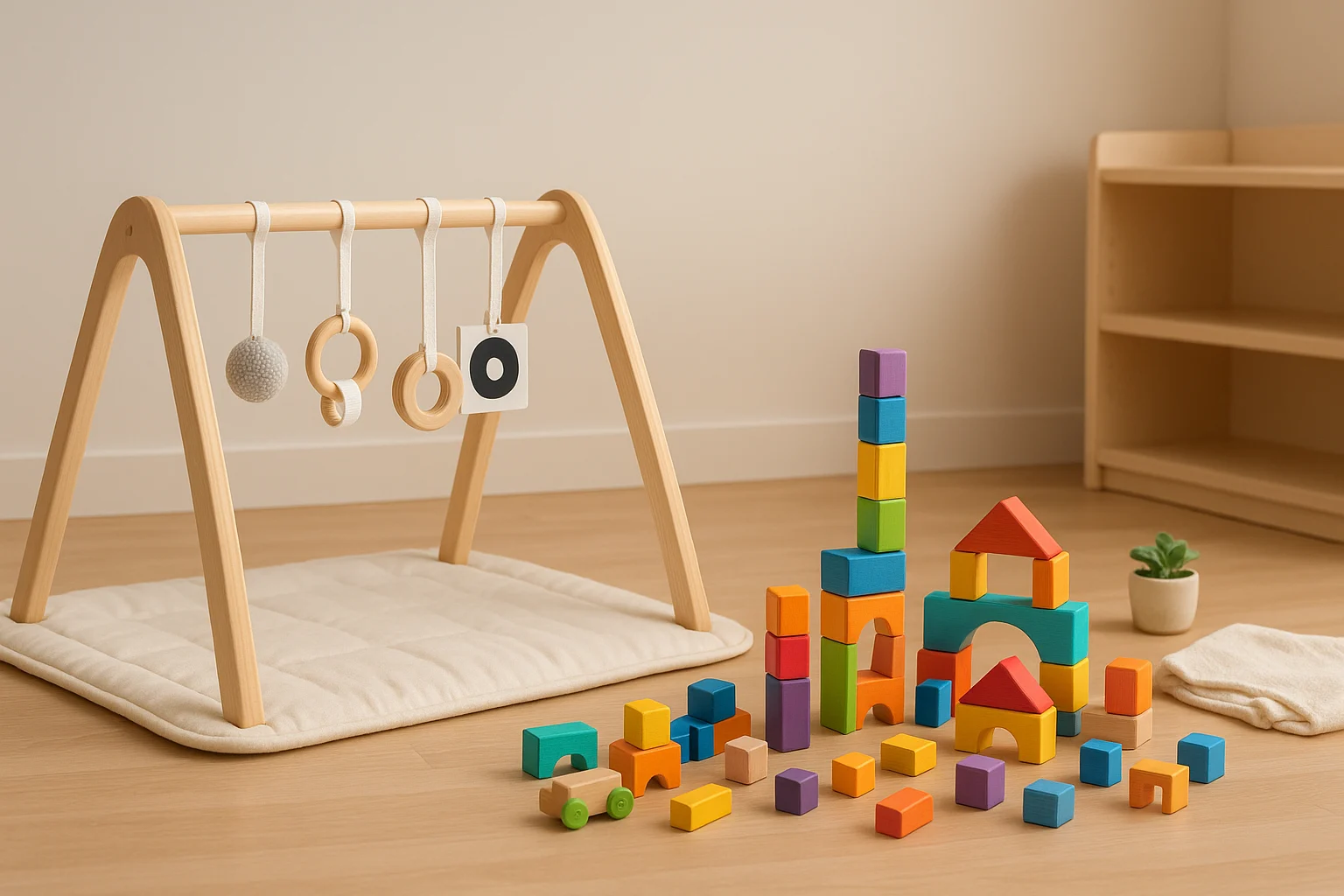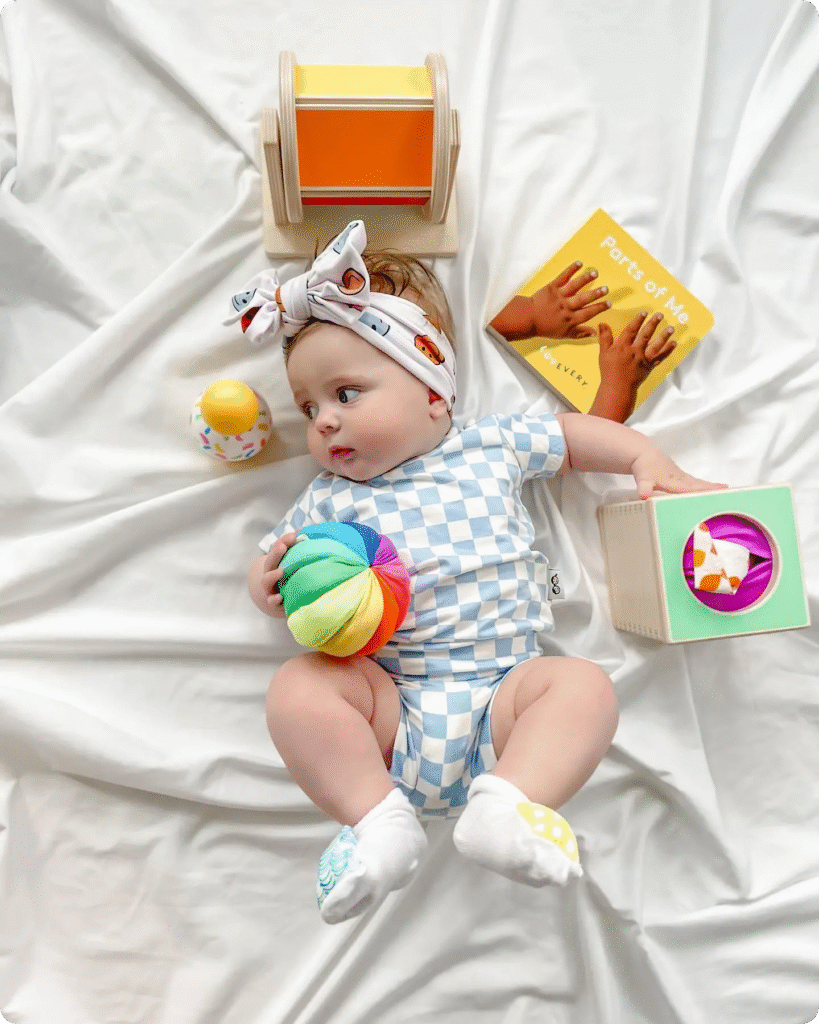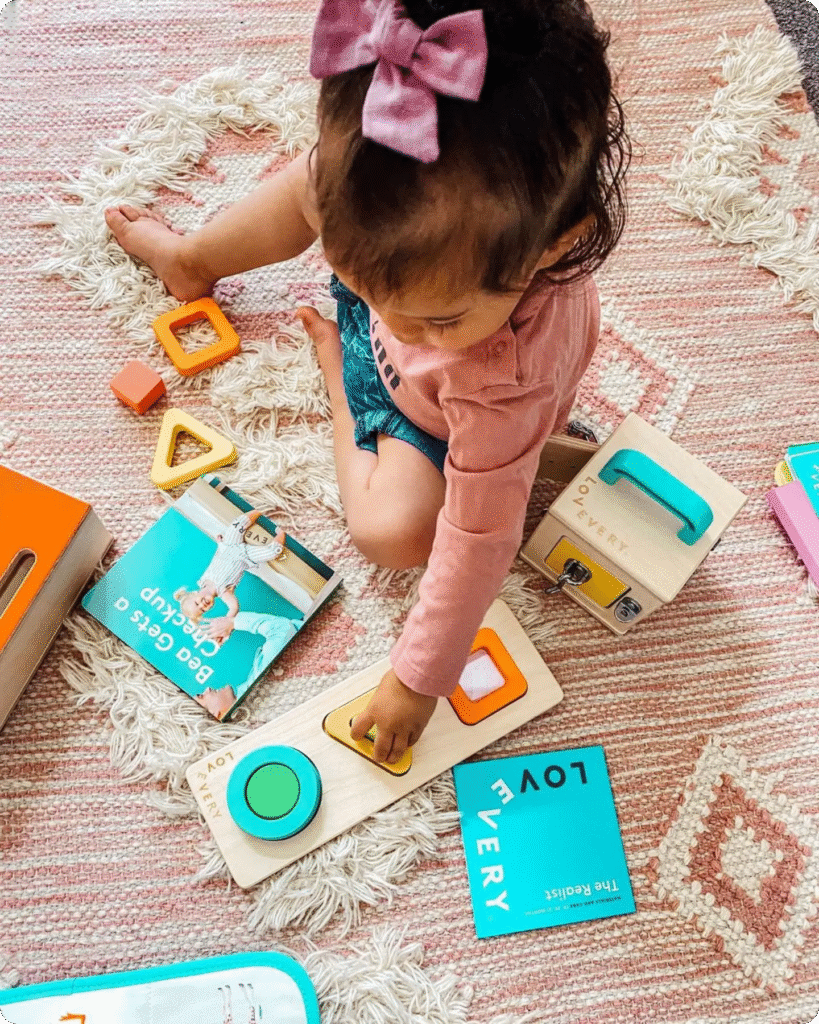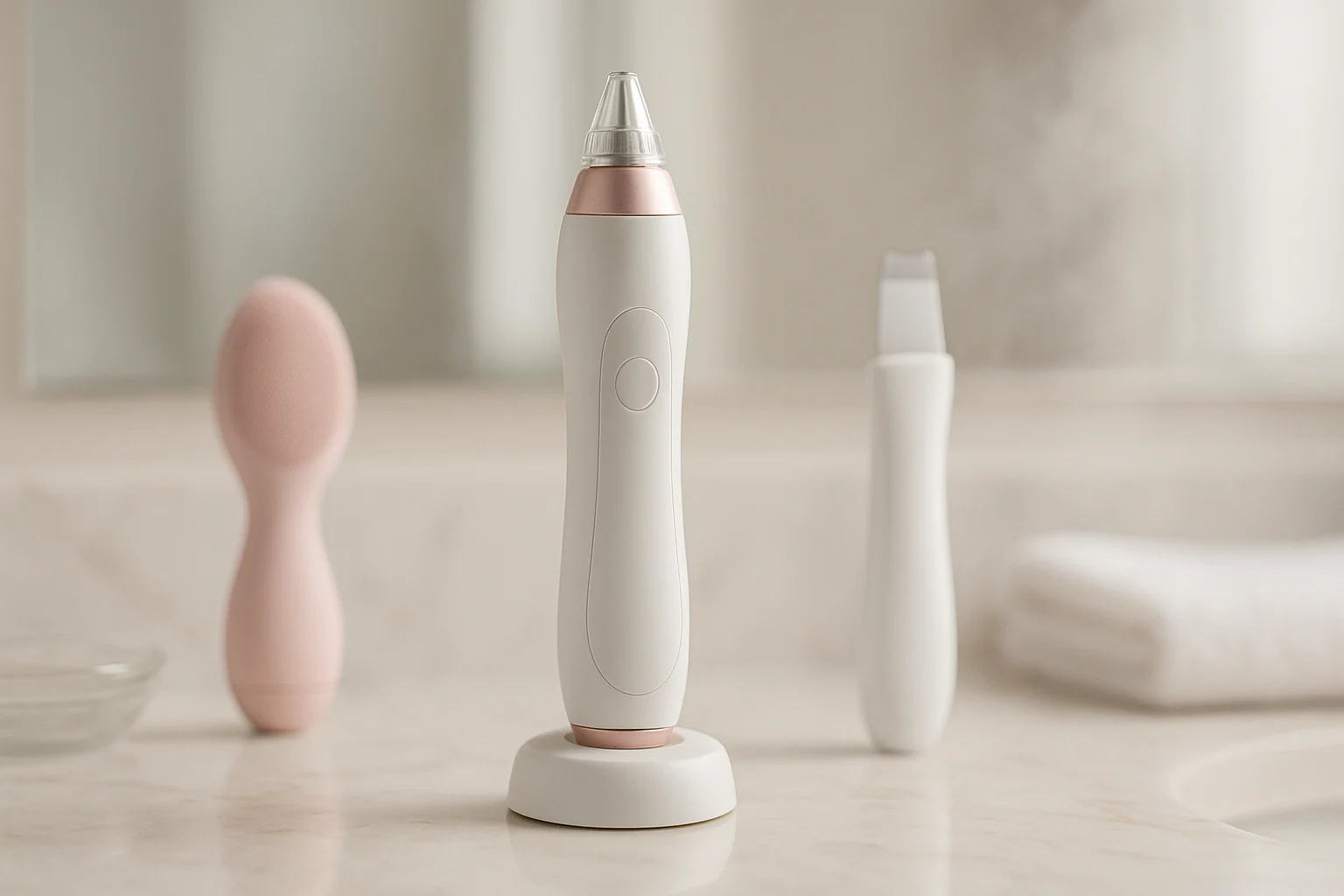Lovevery Review: Stage-Based Play Kits and Montessori Toys Worth the Hype?
If you’ve been curious about Lovevery—the brand behind those minimalist wooden toys and the wildly popular Play Kits—this Lovevery

If you’ve been curious about Lovevery—the brand behind those minimalist wooden toys and the wildly popular Play Kits—this Lovevery review is for you. Lovevery’s core promise is simple: deliver age-appropriate, research-backed playthings at the right time, so you can stop guessing and start playing with confidence. In this deep dive, we’ll cover what Lovevery sells, who it’s best for, how the subscription works, and what it’s like to live with these products day to day. We’ll also spotlight five standout picks from the site, including The Play Kits, The Play Gym, The Block Set, The Montessori Playshelf, and The Music Set, with practical details on design, materials, performance, and verified on-site pricing where available. By the end, you’ll know whether Lovevery is a smart investment for your family—or if you should skip it for alternatives.
Brand Snapshot
Lovevery focuses on stage-based, Montessori-inspired toys and learning systems for ages 0–5. The assortment spans two big buckets: a subscription program called The Play Kits (delivered every two or three months depending on age) and standalone “playthings” like The Play Gym, The Block Set, The Music Set, and furniture such as The Montessori Playshelf. The brand’s consistent themes are real materials (wood, organic cotton, child-safe plastics and silicone where appropriate), calm aesthetics, and guidance for caregivers—think play ideas, developmental tips, and ways to extend a toy’s life as your child grows.
Shipping and returns are straightforward for most items: there’s a standard 30-day return window for products, with prepaid return labels provided for U.S. and Canada. Notably, The Montessori Playshelf is not returnable due to its size/weight and customer-assembled nature; instead, Lovevery covers parts through a 24-month limited warranty. General shipping timelines for most playthings are a few business days from fulfillment, and support is available via email (responses typically within 1–2 business days) and live chat on weekdays. If you’re considering a subscription, you can pause or cancel from your account; plan ahead a few days before your next ship date to avoid an in-process order.
THE TOP FIVE
The Play Kits by Lovevery (Ages 0–5)

Lovevery’s Play Kits are the brand’s signature experience. Each box arrives at the start of a fresh developmental window, so the contents feel “just challenging enough” without overwhelming your child. For the first year, the kits ship every 2 months at $80 per Play Kit; from ages 1–4, they ship every 3 months at $120 per Play Kit. Each delivery contains a curated mix of toys, a book in many of the kits, and a printed Play Guide to help you get the most from the items. The focus isn’t just entertainment—it’s building fine and gross motor skills, problem-solving, early language, and self-regulation through hands-on play.
Design and build are a clear step above generic toy sets. You’ll see solid wood and organic cotton in the baby year, silicone where mouthability matters, and clean geometry that invites open-ended play rather than “push the button, watch the lights.” The real magic is pacing: a tummy-time helper appears right when rolling is coming online; a posting toy shows up as hand-eye coordination explodes; counting, sorting, and early physics arrive during the toddler boom. Caregivers get age-specific tips in the Play Guide and in-app content that evolves alongside a child’s interests.
What about everyday use? The kits rotate in naturally. You can keep 4–6 items in a shelf rotation and store the rest for later; then swap again once your child’s mastery or attention fades. Because Lovevery designs across many months of development, a single piece (like a posting peg, ramp, or board) often reappears in new roles as your child grows. That longevity is a major value driver, especially if you plan to hand down kits to siblings.
Buy Now: Buy Now
The Play Gym

If your baby is 0–12 months, The Play Gym is arguably the best entry point into Lovevery’s world. It’s a one-and-done activity mat with a wooden arch and five Developmental Zones, each hiding focused challenges: high-contrast visuals, batting and grasping, textures for tactile exploration, sounds for cause-and-effect, and a pocket for early object permanence. The kit includes five detachable activity toys, three card sets, and a double-sided Play Space Cover that turns the gym into a cozy toddler fort later on. The components are mouth-safe, the play mat is machine-washable (gentle cycle, air dry), and assembly is tool-free.
Performance-wise, what stands out is how The Play Gym scales. Early on, it’s a magnet for tummy time—even babies who “hate tummy time” often tolerate it longer here because there’s just enough to look at, touch, and kick. As grip and reach improve, the removable toys become on-the-go distractions. Later, the Play Space Cover extends the usable life well past the first birthday; the “fort” stage turns the gym into a base for pretend play. On Lovevery’s site, The Play Gym is listed at $150, which is competitive considering how much is in the box and how long it stays relevant.
Buy Now: Buy Now
The Block Set

This isn’t your basic bucket of cubes. The Block Set is a 70-piece system that blends stacking, sorting, threading, wheels-and-axles, shape matching, and a convertible storage box that becomes a pull car. The pieces span 18 hues and 18 shapes and tools, with an activity guide featuring 20+ ideas organized by complexity. Recommended for 12+ months, it’s a tidy crash course in early STEM: balance and stability, symmetry and patterning, spatial language (“on,” “under,” “through”), and basics like color sorting and counting.
Materials are solid wood with water-based finishes, and the storage is genuinely thoughtful: the lid works as a shape sorter; the divider becomes a ramp; wheels and dowels pair with a toggle string to create a simple car. That means you’re not just building towers—you’re also exploring motion, gravity, and practical engineering through play. The drawstring bag adds flexible storage for quick cleanups or park trips. For value, it’s hard to beat at $95; many parents keep it as a playroom staple through preschool and beyond.
Buy Now: Buy Now
The Montessori Playshelf

If you’ve ever wondered why fewer toys often equals better play, The Montessori Playshelf answers it with form and function. It’s a 2-in-1 storage shelf in Baltic birch ply designed around a core Montessori idea: display a limited set of toys, store the rest out of sight, and rotate regularly to deepen focus. The shelf integrates a front display area and a rear storage compartment sized to hold multiple Play Kits. Soft-close hardware protects small fingers, and the silhouette fits into grown-up spaces without screaming “kid furniture.”
In daily life, the shelf does two things very well. First, it makes rotation frictionless—trays and baskets slide in and out, and a child can reset their own play space with a little guidance. Second, it changes the vibe of the room; visual calm invites longer engagement and less “dump out the bin and move on.” Assembly takes two people and about an hour, and because of the size and weight, this product is not returnable; instead, Lovevery covers replacement parts free of charge for 24 months under a limited warranty. The on-site price is $425, which positions it as a premium, heirloom-quality piece if you’re building a Montessori-style playroom.
Buy Now: Buy Now
The Music Set

Designed for 18 months to 4+ years, The Music Set is a standout for families who want real music learning without formal lessons. Inside are six instruments—including Pentatonic Pat Bells, a Color Tab Pan Flute, a Simple Concertina, a Jingle Bracelet with a wooden handle, Stackable Shakers, and a working Animal Metronome—plus a Rhythm & Songs Book, color-match song cards, and a Play Guide. The pentatonic scale choice is deliberate: five notes that always sound harmonious together, so early “composing” actually sounds good and keeps kids engaged.
The build quality is high (wood, steel, child-safe plastics) with thoughtful touches for caregivers’ sanity—tones are pleasant, the metronome uses animal icons to teach tempo, and the included guidance helps you progress from free exploration to keeping a beat, reading simple patterns, and building basic compositions. Care is straightforward (wipe to clean; rinse/dry the pan flute; AA batteries for the metronome are included). It’s priced on-site at $130, and it fills a rare niche: playful, approachable music literacy that can grow for years.
Buy Now: Buy Now
Hands-On Impressions & User Experience
Living with Lovevery products feels different from a room full of buzzy plastic toys. The palette is calm; the materials are tactile; the designs invite hands to do the work rather than lights and sounds doing it for them. That’s a big deal for babies (who need focus, not overstimulation) and for toddlers (who thrive when toys demand just enough effort to unlock something new).
- Design & build: Wood pieces feel substantial and balanced; finishes are smooth and durable; organic cotton and silicone show up where it matters. Accessories like trays, baskets, and the convertible Block Set box make cleanup and self-directed play more realistic.
- Performance: The Play Kits shine because they arrive at timely moments. In practice, you’ll see your child surprise you: a peg goes in after weeks of “almost,” or the ramp starts a rolling experiment that lasts an afternoon. The Play Gym’s five zones make tummy time more tolerable; The Music Set turns “noise” into pattern recognition.
- Everyday use: Rotation is key. Whether or not you buy the Playshelf, keeping 4–6 toys out and swapping weekly can extend attention spans. Lovevery’s guides (printed and in-app) are excellent at translating developmental theory into simple, doable activities.
- Care & maintenance: Fabric items wash easily on gentle, air dry; wood and plastic components wipe clean; batteries are limited to specific pieces (e.g., The Music Set’s metronome). Replacement parts support is strong, especially for the Playshelf under its 24-month coverage.
- Accessibility & fit: The aesthetic works in grown-up spaces, and the size of items (handles, knobs, pegs) aligns with small hands at the intended ages. The clear photographic guides help you set up invitations to play in seconds.
Features & Specs (At a Glance)
- Stage-based subscription (The Play Kits): ships every 2 months in the baby year ($80 per kit) and every 3 months from ages 1–4 ($120 per kit).
- Materials: real wood, water-based finishes, organic cotton textiles, silicone for mouthable parts, child-safe plastics where appropriate.
- The Play Gym: five Developmental Zones, detachable toys, three card sets, double-sided Play Space Cover; machine-washable mat (gentle); tool-free assembly.
- The Block Set: 70 pieces; 18 colors; 18 shapes/tools; includes threading, wheels/axles, and a storage box that converts to a pull car.
- The Montessori Playshelf: Baltic birch ply; front display + rear storage; soft-close hardware; 2-person assembly; not returnable; 24-month parts warranty coverage.
- The Music Set: six real instruments, Rhythm & Songs Book, color-match cards; designed for 18 months to 4+; working metronome (AA batteries included).
- Returns: 30-day return window for most products (prepaid labels in U.S./Canada); Playshelf excluded from returns.
- Support: email responses typically within 1–2 business days; weekday live chat hours.
Quality, Reliability & Support
Lovevery earns its reputation on consistency: thoughtful design, predictable pacing, and high-quality materials. Blocks stay square, pegs fit openings without jams, and textile pieces endure real use. For outliers—lost parts, a dinged panel—customer service is responsive. The Montessori Playshelf deserves special mention: it’s not returnable, but the 24-month limited warranty provides free replacement parts for issues outside of misuse. For most other items, the standard 30-day return policy with prepaid labels (U.S./Canada) reduces risk. And if you’re on a subscription, cancellation and skips are manageable from your account—just act a few days before your next ship date.
Pricing & Value for Money
Lovevery isn’t bargain-bin, but the pricing lines up with build quality and longevity.
- The Play Kits: $80 per kit (every 2 months) in the baby year and $120 per kit (every 3 months) from ages 1–4. For families who’d otherwise scatter-buy toys each month, the kits effectively bundle that spend into a curated, research-backed sequence with guidance included.
- The Play Gym: $150 for a one-year workhorse that often carries into toddlerhood thanks to the Play Space Cover.
- The Block Set: $95 for 70 pieces and multi-year replay value—rare at this price point.
- The Montessori Playshelf: $425 reflects premium materials, design, and the functional impact of rotation on a child’s play.
- The Music Set: $130 for a real-instrument introduction that grows with your child for several years.
If you’re on a tight budget, the Block Set alone offers tremendous mileage. If you want the full Lovevery experience at the lowest total cost, start with the baby Play Kits for the first year and add The Play Gym; you can reassess in the toddler years based on your child’s interests.
Who It’s Best For / Who Should Skip It
Best for:
- Caregivers who want expert-designed toys, delivered on a predictable cadence, with clear guidance.
- Families embracing Montessori or simply seeking calmer, less flashy playthings that invite focus and independence.
- Households with multiple children who will share or inherit kits and open-ended sets like blocks and music instruments.
Consider skipping or cherry-picking if:
- You prefer highly electronic, light-and-sound toys or big character licenses; Lovevery leans minimal and analog.
- You’re building a playroom on a very tight budget; starting with a single hero product (The Block Set) or hunting secondhand may be wiser than subscribing right away.
- You need absolute return flexibility on furniture; the Playshelf is final sale (covered by parts warranty but not returnable).
Comparisons (On-Site Alternatives)
- The Play Gym vs. The Bath Set ($60): If tummy time and early sensory work are your priorities, pick The Play Gym first. The Bath Set is delightful for water play and practical independence (pouring, scooping, washing), but it’s supplemental—not a replacement for the gym’s year-long skill arc.
- The Block Set vs. The Play Tunnel ($50): The Tunnel is fantastic for gross-motor play, but the Block Set stretches further across cognitive, language, and fine-motor domains. If you can only choose one, blocks win on versatility and multi-year replay.
- The Montessori Playshelf vs. Montessori Wooden Trays & Felt Baskets ($40): The trays and baskets are great budget helpers for toy rotation on an existing shelf, but if you want an integrated system that hides out-of-rotation items and invites self-resetting, the Playshelf is the complete solution.
Buying Guide: How to Choose Lovevery Products
- Start with age and stage: Under 12 months? The Play Gym + baby Play Kits is the gold standard. Ages 1–2? The Play Kits plus either The Block Set or The Music Set covers most bases.
- Think rotation, not accumulation: Plan a display spot (shelf or trays) and a simple rotation cadence. If your child stops engaging, switch 2–3 items, then observe.
- Prioritize open-ended pieces: Blocks, ramps, threading, simple instruments—these adapt to your child’s ideas and hold interest longer than single-purpose novelties.
- Check your space: A dedicated shelf, a rug for blocks, a corner for the gym/fort—having “homes” for toys is half the battle for calmer play.
- Budget for longevity: A slightly higher upfront price can pay off if an item spans multiple developmental stages or siblings.
- Lean on the guides: The Play Guides and app content turn “nice toy” into “daily mini-curriculum” without feeling like school.
FAQs
How often do Play Kits arrive, and how much do they cost?
In the baby year (0–12 months), kits ship every 2 months at $80 per kit. From 1–4 years, they ship every 3 months at $120 per kit.
Can I return Lovevery items?
Most products have a 30-day return window with prepaid labels provided in the U.S. and Canada. The Montessori Playshelf is not returnable due to size/weight and assembly; it’s covered by a 24-month limited parts warranty instead.
What materials does Lovevery use?
Expect real wood with water-based finishes, organic cotton in textiles, silicone for mouthable pieces, and child-safe plastics or steel where appropriate (e.g., certain instruments).
Is assembly required?
Most toys are ready out of the box. The Montessori Playshelf requires two people and roughly an hour. The Play Gym assembles in minutes without tools.
How do I clean Lovevery toys?
Fabric items generally machine-wash cold on gentle and air dry; wood and plastic wipe clean. Product pages include any special instructions (e.g., rinse and air-dry the Pan Flute; AA batteries for the metronome are included).
Can I cancel my subscription?
Yes. Manage your account online; cancel or skip a few days before your next ship date to avoid processing of the upcoming kit.
Verdict
Lovevery delivers on its promise: beautifully made, research-driven toys that arrive right when your child is ready for them. The subscription removes overwhelm, the guidance turns five minutes into purposeful play, and the materials feel good in small hands and grown-up homes alike. If you want a simple, high-confidence plan for your child’s first five years, The Play Kits plus one or two open-ended anchors (we love The Block Set and The Music Set) is a no-brainer. Add The Play Gym in the baby year to unlock more tummy-time wins, and consider The Montessori Playshelf if you’re ready to commit to rotation. For families who value thoughtful design and longevity over flashing lights, Lovevery is absolutely worth it.








